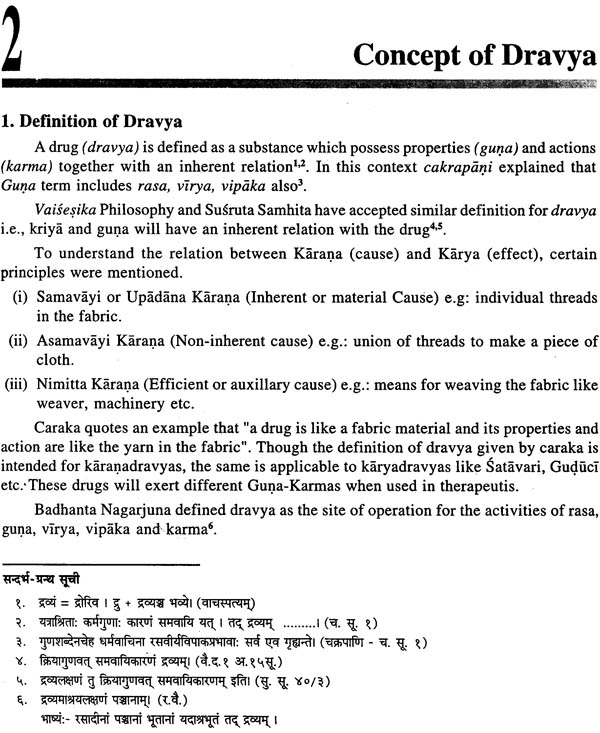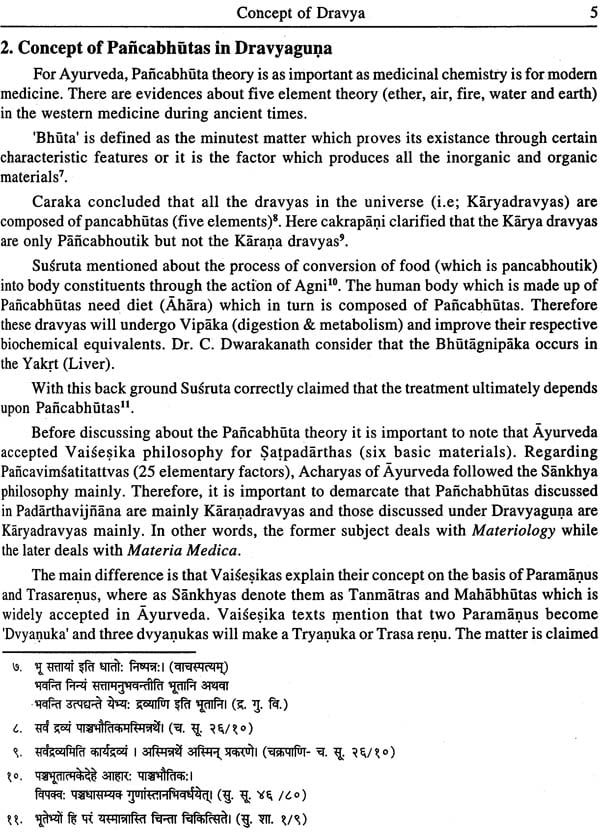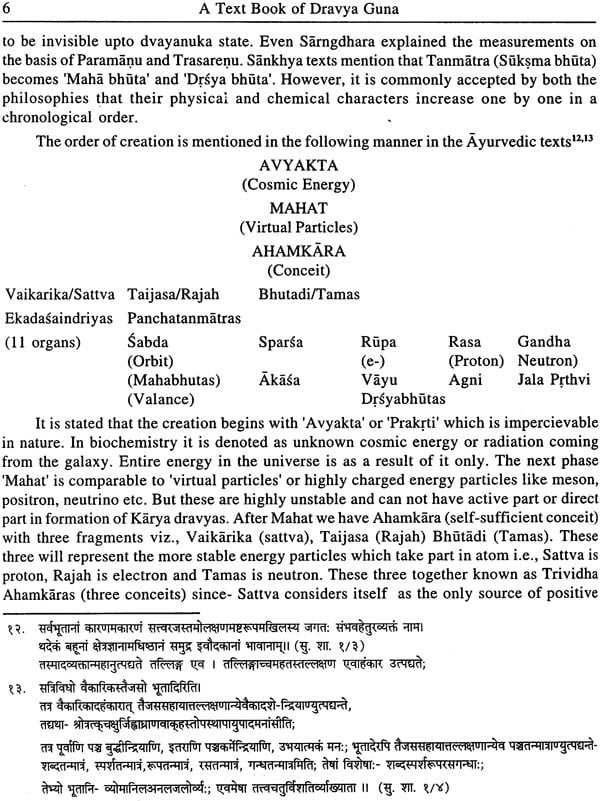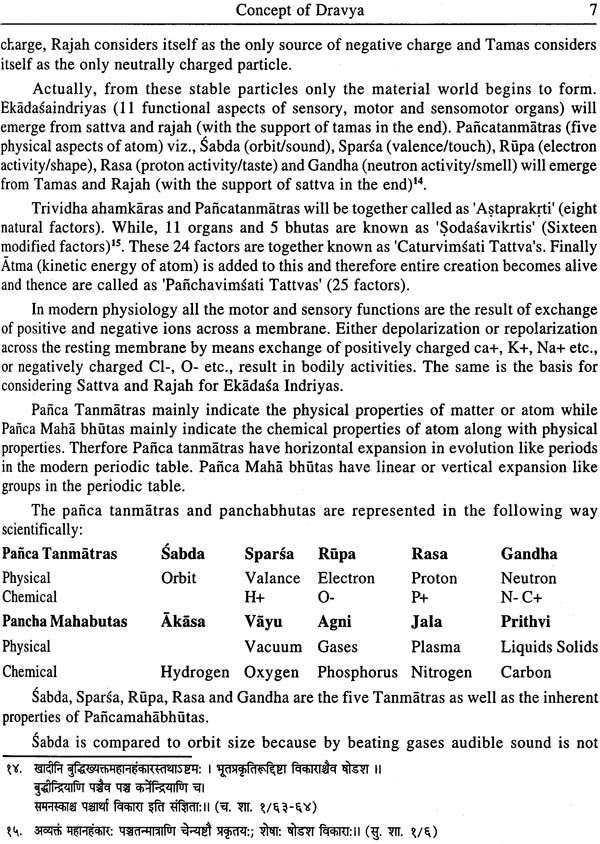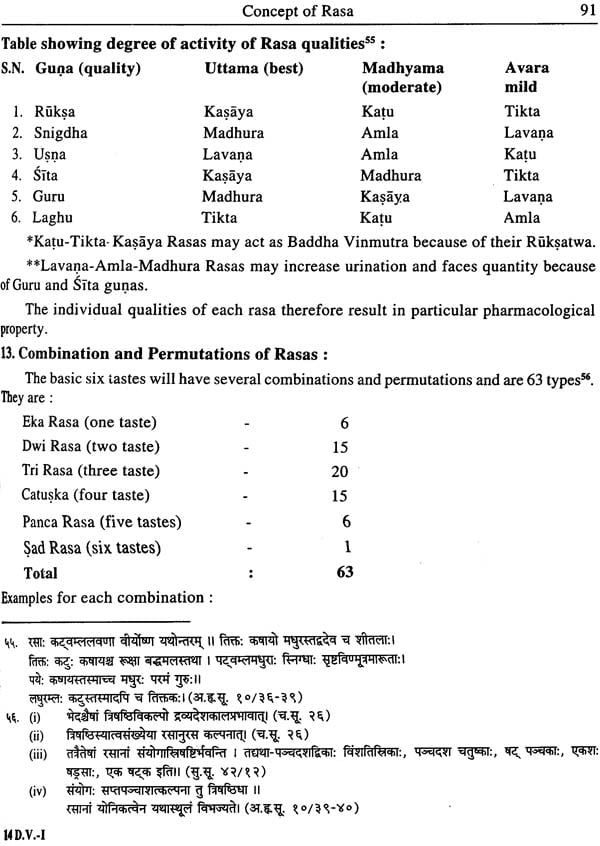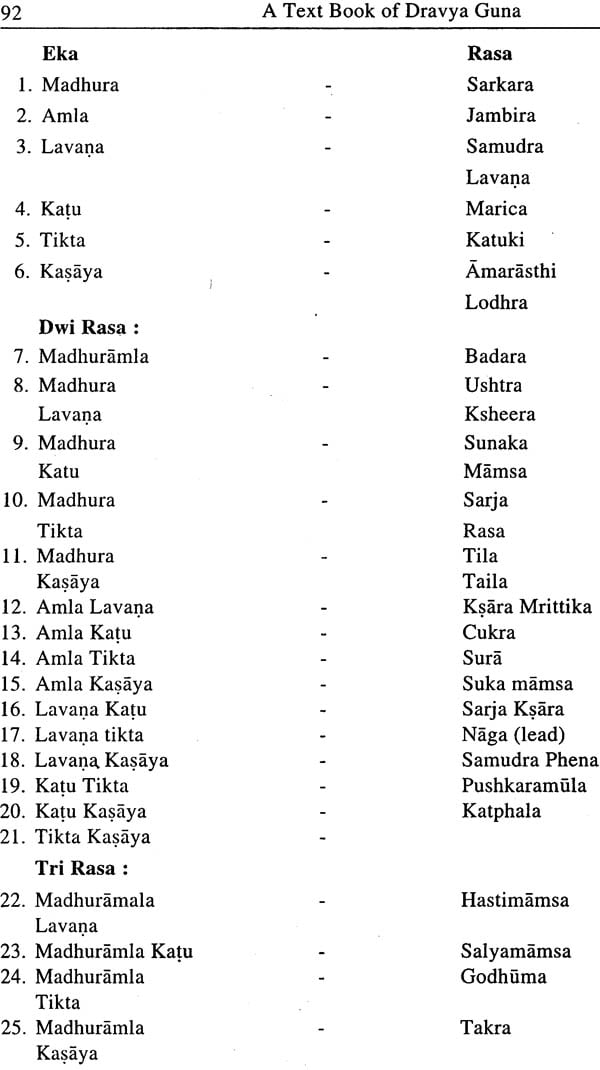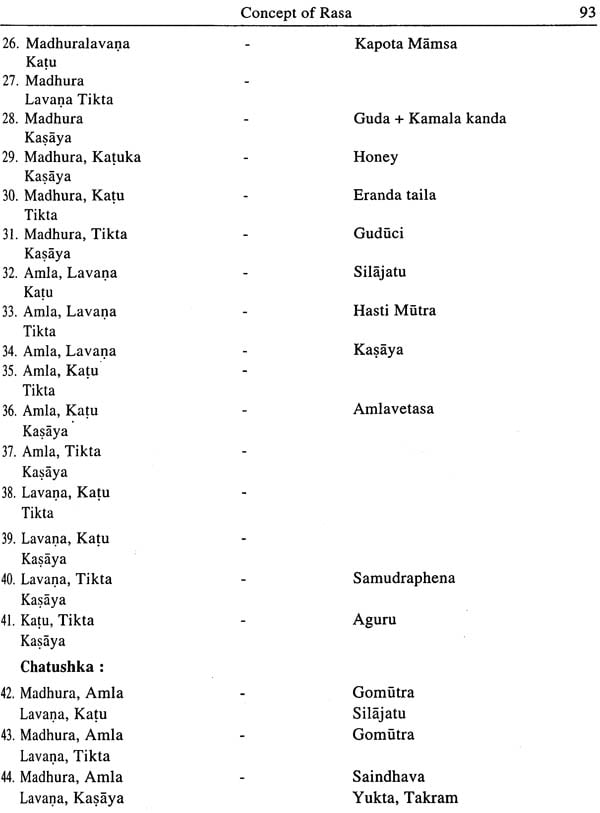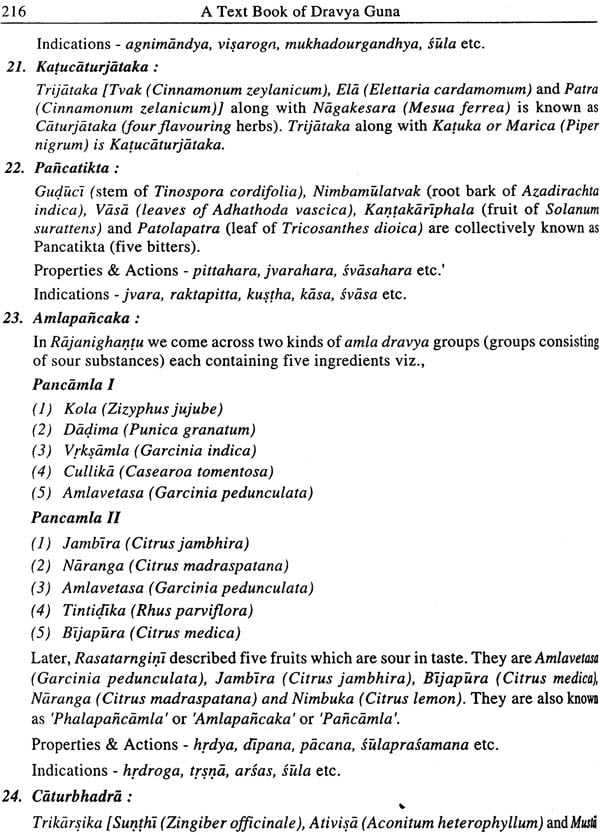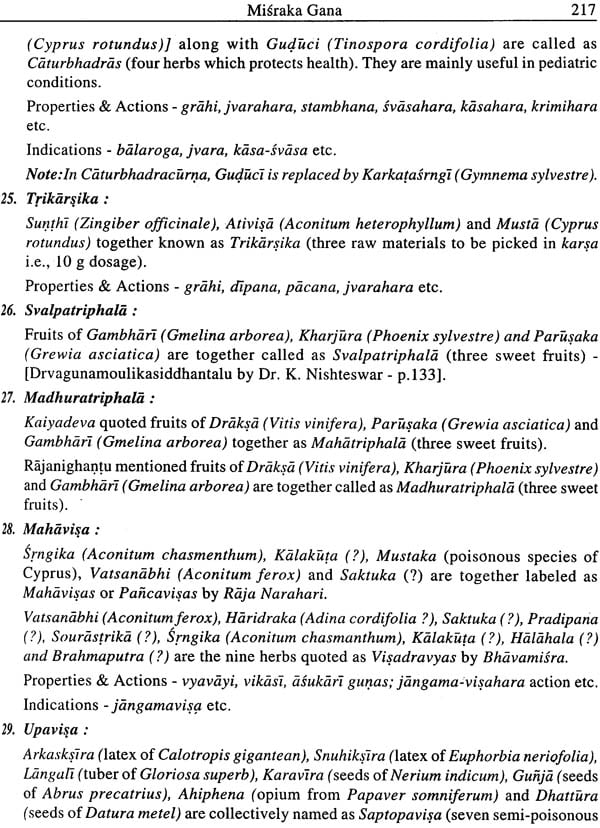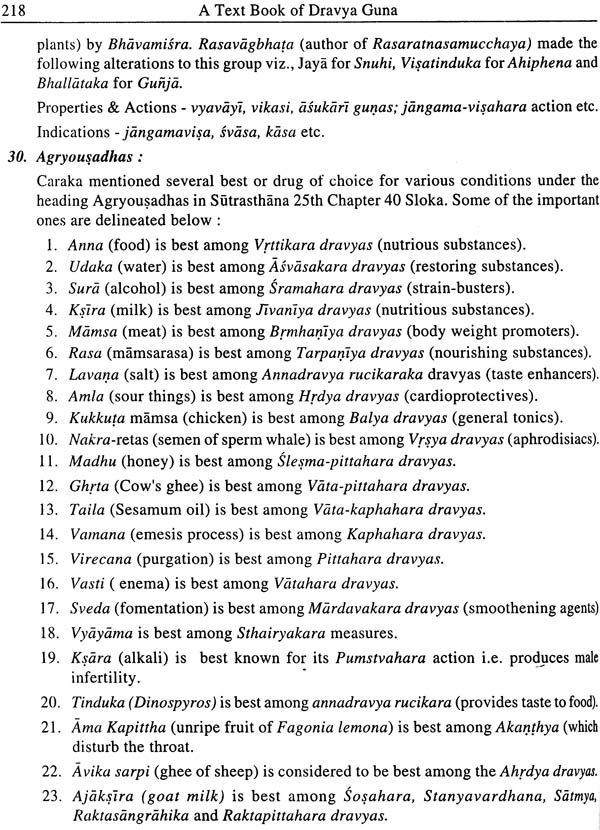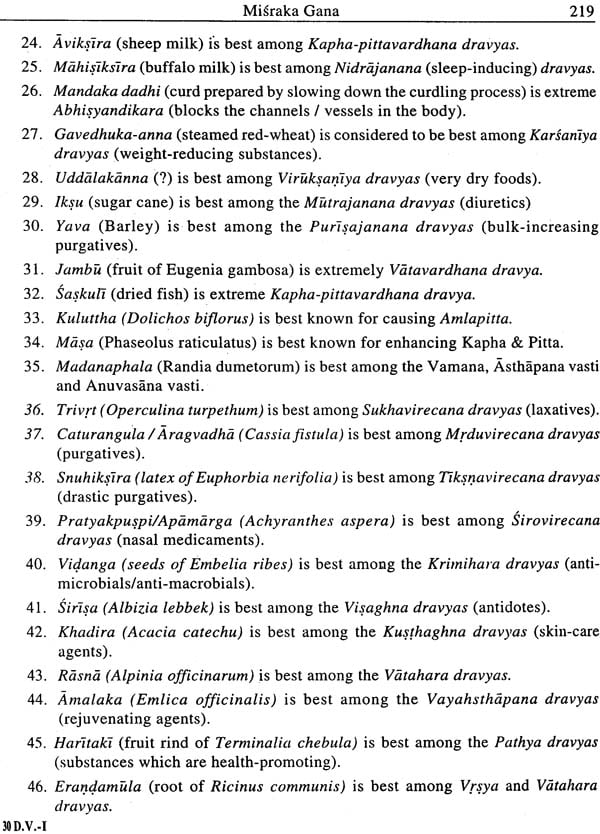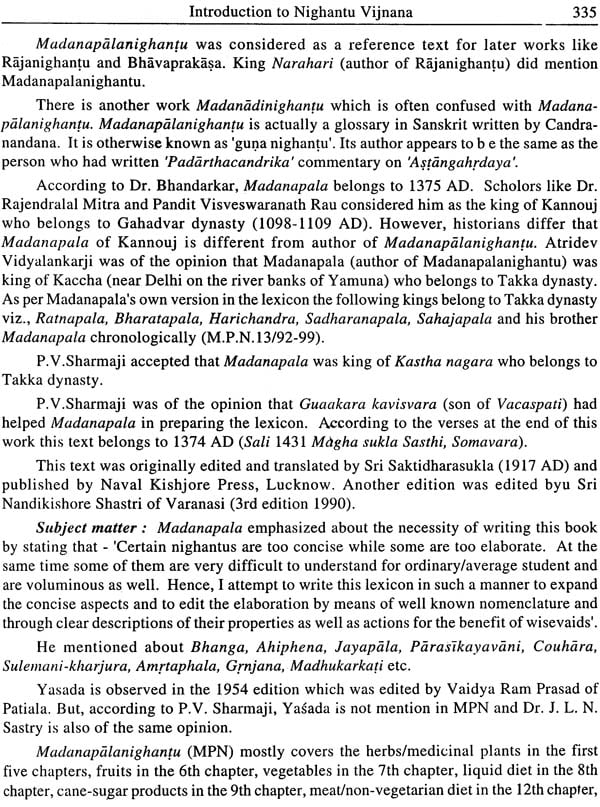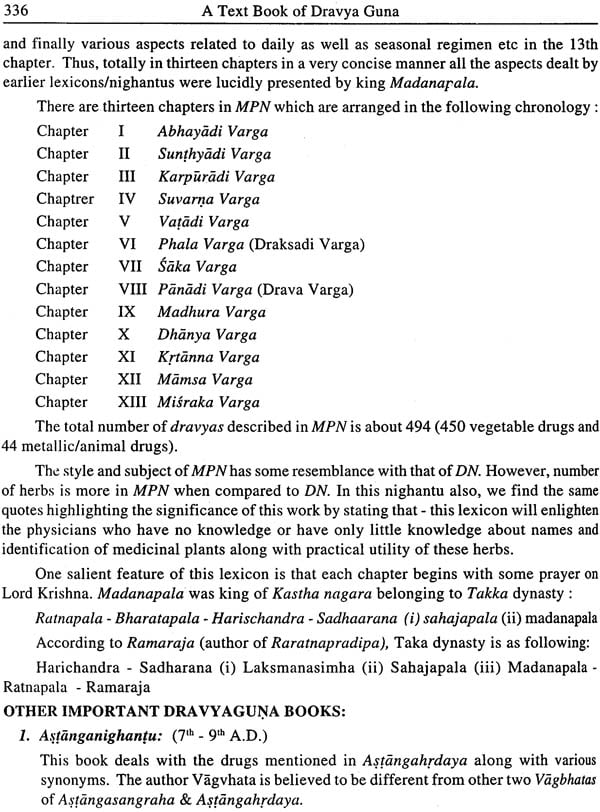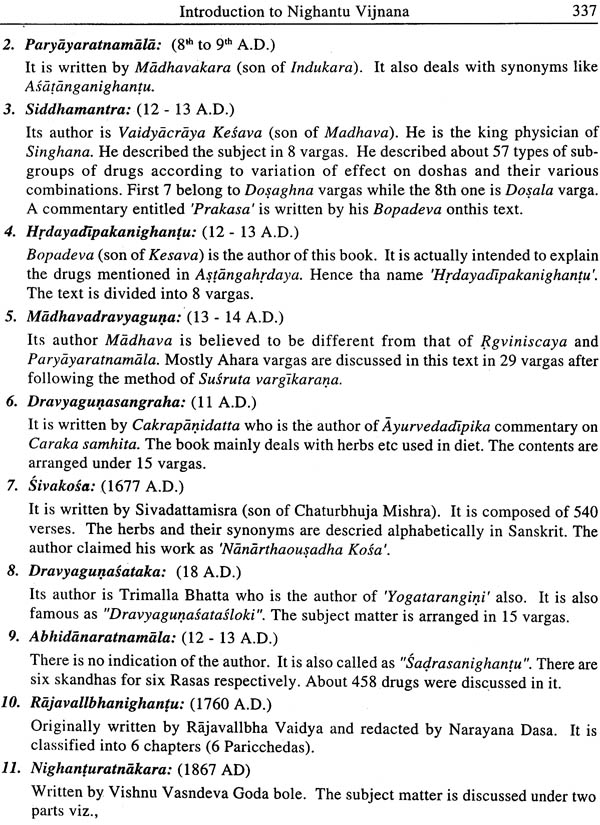
A Text Book of Dravyaguna Vijnana (Volume I)
Book Specification
| Item Code: | NAM009 |
| Author: | Dr. J. L. N. Sastry and Dr. Tanuja M. Nesari |
| Publisher: | CHAUKHAMBHA ORIENTALIA, Varanasi |
| Language: | English |
| Edition: | 2015 |
| ISBN: | 9788176373333 |
| Pages: | 388 |
| Cover: | Paperback |
| Other Details | 9.5 inch x 7.0 inch |
| Weight | 620 gm |
Book Description
About the Author
Dr.J.L.N. Sastry belongs to traditional Ayurveda family from Kakinada (E.G. Dist. Andhra Pradesh). He graduated from Dr. N.R.S. Govt. Ayurvedic College, Vijayawada (A.P.) in June 1989. He was university topper with two gold medals in BAMS. In the same year he topped AP Public Service Commission and joined as Medical officer under AP Govt. He completed PG studies from Dr. B.R.K.R. Govt. Ayurvedic College, Hyderabad in 1998. He received a gold medal and silver medal for his thesis work at both state and national level respectively. In the same year he topped UPSC and joined as Medical officer at CGHS, Chennai.
He is involved with teaching and training in Dravyaguna subject at the following institutes viz...Dr. B.R.K.R. G.A.C., Hyderabad- 1995-99; S.D.A.C. & H., Chandigarh- 2004-07; Ayu College, Dharwad- 2007-09; Ayu College, Tumkur- 2009-11; S.D.A.C. & H., Chandigarh- 2011-12. He had been made as member for the Dravyaguna Syllabus Committee in 2012.
Currently he is designated as Head- Healthcare Research for Dabur Research & Development Centre, Sahibabad, Ghaziabad Dist. U.P. since 2012. He is a member of APC (Ayurvedic Pharmacopoeia Committee), Govt. of India and member of USP (U S Pharmacopoeia) Committee for Herbal Medicines. He is Joint Secretary of AMAM (Association for Manufacturers of Ayurvedic Medicines) and Executive member of ADMA (Ayurvedic Drug Manufacturers Association).
His M.D. (Ayurveda) dissertation was the first HPLC standardization work and his P.D. thesis is the first work on substitutes used in Ayurveda.
His work ‘CARDIAC DISEASES & THEIR MANAGEMENT THROUGH AYURVEDA’ received national award 2009. He received “CHARAK INTERNATIONAL AWARD” from AAPNA association, USA in October 2010. He published more than 15 reference books on Ayurveda. He has presented several clinical and scientific papers at regional, national and international seminars with more than 30 publications in reputed journals and newspapers. He had given several Radio-talks and guest lectures at various prestigious institutes.
Dr. Tanjua M. Nesari, has vast experience as professor of Dravyaguna at UG as well as PG level. She did her post-graduation from GAU, Jamnagar in 1982. Her Ph.D. was completed at Pune University under the guidance of Prof. A. P. Deshpande.
She served as Professor/HOD, Dept. of Dravyaguna (UG & PG), Tilak Ayurved Mahavidyalaya, Pune. Later, she acted as Principal of the same institute. Currently, she is Additional Director for Chowdhary Brahma Prakash Charak Ayurved Samsthan, New Delhi.
She is Executive editor of International Journal for research in Ayurved by Department of AYUSH. New Delhi (2009). She is Coordinator for Pharmacovigilance, Peripheral center atTilak Ayurved College. Prof. Tanuja Nesari is invited to conduct lectures on Herbology at SFO, California, USA (2009 & 2010).
She is appointed as alternate leader for developing research collaboration with MAYO clinic. She presented various scientific as well as review papers at various as well as international seminar. She also guided several dissertations and thesis works at P.G. and Ph.D. level.
Ayurveda and Dravyaguna Vijnana are synonyms for Caraka (500 BC) since he defined Ayurveda as guna-karma of different dravyas-YATASCAYUSYANI ANYUSYANI DRAVYAGUNA KARMANI IHOCYATE, TATOPYAYURVEDAH (C.S.Su.30). The endeavor of understanding drug action and properties continued from Samhita times (<10 AD) to Yogagrantha period (15-20 AD). Between 10th AD to 15th AD, several nighantus (lexicons) were written specifically targeting the herbs and their guna-karmas. These dravyaguna nighantus extend from Dhanvantari Nighantu of Mahendra Bhogik (9-10 AD) to Raja Nighantu of Narahari (17-18 etc).
According to Sri P.V. Sharmaji- about 1100, 1270 and 1150 single drugs (by individual names) were respectively mentioned by Caraka, Susruta and Vagbhata in their treatises. But, if one counts these herbs by botanical sources, about 500-600 herbs will be found in the Brhat Trayi (three major treatises). Later, Dravyaguna Nighantus (lexicons on herbs etc) have introduced new herbs and gradually the number of herbs increased up to 900 (considering all the controversial herbs together). The tradition of these lexicons came to an end by the turn of 20th century AD specially after the advent of Yoga granthas (compilation works) on formulations in the modern era. Saligrmanighantu of Lala Saligram Vaidya, Nighantu Adarsh of Bapalal vaidya and Priyanighantu of Acharya P.V. Sharmaji are some of the examples for the nighantus of modern times.
On the other hand, the Ayurvedic teaching and training has undergone a drastic change from the ancient guru-sishya parampara to a organized institutional training. Though this is a welcome change there are merits and demerits to this change over. While the teachers/gurus of ancient genera used to teach the original texts of Ayurveda along with practical training using the jadi-buti (herbs) available locally, the institutional training has increased the gap between the nature and the vaid. Between 1960 and 1970, the Ayurvedic education was mainly controlled by Ayurved Vidya Peeth, New Delhi wherein scholar-practitioners used to engage the students of Ayurveda in teaching and training. After the introduction of CCIM Act in 1970, the Ayurvedic education in the country is streamlined. A uniform syllabus was introduced in 1976 for all the colleges functioning under different state governments/universities.
With CCIM (1970) taking over the responsibility of streamlining the Ayurvedic education in the country, Dravyaguna has become part of the curriculum of BAMS (Bachelor of Ayurvedic Medicine and Suregery). The syllabus was focused on seven fundamentals of Dravyaguna (Dravya-Rasa-Guna-Vidya-Vipaka-Prabhava-Karma) followed by the knowledge on individual herbs etc. initially, there were 378 herbs (126 major herbs +252 minor herbs) in the syllabus till 2005. Afterwards, several syllabus committees shrunk the list to 250-300. Again, there were several changes proposed in the syllabus of DRAVYAGUNA VIJNANA in 2010-11 and the syllabus committee could finalize the new syllabus for Drayaguna.
A review on text books on Dravyaguna suggests that several scholars/authors have attempted writing the texts in Hindi on this subject which includes the greats like Sri Yadavjir Trikamji; Sri Priyavrata Sharmaji; Vd Bapalalji etc. In south India scholars like Vd. Savnor from Kerala and Dr. Nishteswar from Andhra Pradesh have published their works in local languages. It is Dr. Sastry who published the full length English text (with 5 volumes) on the subject Dravyaguna Vijnana (2001-08) through Chaukhambha Orientalia, Varanasi.
But after the introduction of new syllabus in 2012, there is no text available in any language on this subject. Indentifying the necessity, Dr. J. L. N. Sastry who was acting as Professor & HOD for the department of Dravyaguna at Sri Dhanwantry Ayurvedic College, Chandigarh (Head-Health Care Research, Dabur at present) decided to make the English version on this subject on the basis of new syllabus. In this endeavour the author requested his Ph.D. guide Prof. Dr. Tanuja M. Nesari, Professor & HOD, PG Department of Dravyaguna, Tilak Ayurveda Mahavidyalaya, Pune to be the senior author. These two are versatile personalities in the field of Ayurveda in general and in the field of Dravyaguna in specific who made a lucid translation and compilation.
This work is actually completed and sent for press in 2012 itself. But, in 2012 the newly elected CCIM body established a new syllabus committee in which the author as well as the senior author was members. This committee finalized the Dravyaguna syllabus in 2014 with the minor changes. Those changes are incorporated into the text and the text is made ready in record time. The authors deserve thorough appreciation for their effort since this will be the only text available on Dravyaguna (on the basis of new syllabus) in any language though for the time being.
It is heartening to note that “The Text Book of Dravyaguna” is being presented in two volumes the first one covering the fundamentals while the second one covers the individual herbs etc. The first volume covered all the 18 points of the CCIM syllabus. There are 18 chapters wherein each topic is discussed elaborately. Author’s point of view on Dravyaguna is contemporary as well as futuristic. While describing the fundamentals of Dravyaguna, proper care is taken not to make true translation. The most fascinating aspect of the text is where ever it is possible the research activity related to the fundamentals to Dravyaguna have been referred.
Authors have mentioned about the experiments of Sri S. C. Dhyaniji on rasa and the experiments of Dr. Nishteswar on virya in a detailed manner. This would help the enthusiastic student in planning for the future activities. At the same time, the concepts related to less studied vipaka aspect have been provided through a hypothesis of using metabolic cage model on animals for evaluation of vipaka of unknown herbs. The concept of Baddha Vinmutra for Katu Vipaka and Srsta Vinmutra for Madhura Vipaka can be properly assessed by these experiments which will revolutionize the new drug research on the basis of fundamentals of Ayurveda.
The most significant part of this text is that the authors have not restricted them to syllabus alone. Where ever necessary additional points have been described. For example, in the context of nighantus, though limited names have been mentioned in the syllabus, the authors have provided the information regarding all the major nighantu works.
It is also learnt that the authors have submitted the menuscript of second volume covering the individual herbs as per the syllabus. I wish the second volume will also be made available to the students community at the earliest.
I sincerely, thank the authors for considering me for writing the foreword for this text.
In the end, the publishers M/s Chaukhambha Orientalia, Varanasi are to be specially congratulated for bringing out this work in record time.
It is my pleasure to be part of Text Book of Dravyaguna as senior author. Earlier, I happen to write the foreword for one of the volumes of Dravyaguna Vijnana written by Dr. Sastry. I know the author as a student of Ph.D. Understanding the principles of Dravyaguna, he is venturing into a complete work on the basis of new syllabus. Yet again the author decided to bring out another volume for the benefit the student community. It is glad to find an elaborate and extensive description of fundamentals of Dravyaguna in this volume. The herbs will be discussed in the next volume. His approach towards the subject is apparent while describing the Virya and Karma chapters.
The author’s efforts are commendable in presenting all aspects of Dravyaguna by correlating Ayurvedic concepts with the concepts of modern science in a simple and lucid language. The author had taken pain in collecting the information from various texts of Ayurveda and modern science.
This book is really useful for the Ayurvedic students as well as practitioners to learn about the fundamentals of Dravyaguna. Since the book provides ancient and modern knowledge, it will be helpful for students and practitioners to utilize this book. The Central Council for Indian Medicine should recognize this book as reference book for the undergraduate student to make them update.
I once again congratulate the author and the publishers for bringing out a very useful book on Dravuaguna vijnana.
Ayurveda is redefined as Dravuaguna by Caraka (YATASCAYUSYANI ANAYUSYANI CA DRVYAGUNAKARMANI TATOPYAYURVEDAH –C.S.Ci.30). Raja Narahari the author of Raja Nighantu considered Dravyaguna as the first branch of Ayurveda (DRAVYABHIDHAN GADANISCAYA KAYA SOUKHYAM O Ra Ni.). It is Prolf. P. V. Sharma who had provided the Sanskrit version of definition for Dravyaguna.
Pursuits for health and longivity have been the main activity of human kind since times immemorial. Using the natural resources for maintanace of health and management of disease dates back to Vedic period. It is observed that the history of drugs is essentially the history of civilization and science. The Vedic culture reflects the unfolding science and civilization of ancient India. Hindu mythology put forward ‘Brahma’ as the propounder of four Vedas viz., Rgveda, Yajurveda, Samaveda and Atharvaveda. These Vedas are the sources of correct and complete knowledge in ancient India.
‘Ayurveda’—the knowledge of life sciences is emerged as the upaveda of Atharvaveda (1200 BC) and is full in medical knowledge. The emphasis laid on single drug therapy for different diseases in the Vedic period is quite evident from the available references. The number of medicinal plants delineated in Rgveda, Yajurveda and Atharvaveda are 67, 81 and 189 respectively.
The utility and usage of vegetable drugs is more identified in the samhita period. It is recorded that Caraka, Susruta and Vagbhata have described 1100, 1270 and 1150 drugs respectively in their treatises along with their pharmacological properties and therapeutic effects under different classifications.
Earliest references about dravyaguna nighantus (lexicons on material medica) are available from 6-7 AD. Some of the important lexicons include: Dhanvantari Nighantu of Mahendra Bhogik (9 AD), Dravyaguna of Madhava (10 AD), Dravyagunasangraha of Cakrapani (10 AD), Pathyapathyavibodhini of Kaiyadeva (12 AD), Namaguna-sangraha of Sodhala (13 AD), Madanavinaoda of Madanapala (15 AD), Bhavaprakasa of Bhavamisra (16 AD), Nighanturaja of Nrsimhapandita/Narahari (17-18) etc.
These lexicons are followed by several compilation works on medicinal plants in the modern era. Saligrmanighantu of Lala Saligram Vaidya, Nighantu Adarsh of Bapalal vaidya and Priyanighantu of Acharya P.V. Sharmaji are some of the examples for the modern time nighantus. In the process both the nighantus and other compilation works contributed many new drugs to Indian Materia Medica.
The author of this text is of the opinion that for Ayurveda, Dravyaguna is like Pharmacology for modern medicine. More precisely, Dravyaguna is a combination of herbal pharmacology, pharmacognosy, phytochemistry and clinical pharmacology. Therefore, three will be enormous pressure on an average student to understand all the intricacies and move on in the academics. The author recollects the concern shown by Sodhala in his work Nama Sangraha as an example. Sodhala had shown concern over the non-availability of lucid text books for the average students of Ayurveda. This is applicable to subject Dravyaguna as well. If we review carefully, several books have been written over this subject in different languages. But, when it comes to Dravyaguna texts in English which is the recommended language by CCIM (along with Sanskrit), we do not come across number of works.
The author had earlier published DRAVYAGUNA VIJNANA in an elaborate manner which is the only English version on this subject and is available in five volumes (Chaukhambha Orientalia, July 2000-08). Afterwards, it is realized that there are several typographical errors in the earlier work and decided to correct by publishing the second edition. However between 2008-2014, there were several amendments to the syllabus of Dravyaguna by CCIM committee. The author’s Ph.D. guide Prof. Dr. Tanuja M. Nesari was part of these committee and after several discussions the author as well as the senior author has decided to come out with a new text on the basis of new syllabus. Thenceforth, a book was completed and sent for press in 2012 when the author was heading the Dept of Dravyaguna at Sri Dhanwantry Ayurvedic College at Chandigarh.
But, in 2012 the newly elected CCIM body established a new syllabus committee in which the author as well as the senior author was members. This committee finalized the Dravyaguna syllabus in 2014 and the authors have realized that there is no text available on the basis of new syllabus in any language. In record time with the needed corrections the text is made ready to benefit the students.
The author would like to thank all the teachers and students who have encouraged the earlier work on Dravyaguna Vijnana a great success! The present work will be more utilitarian and crisp for the students. Teachers like Prof. K. Nishteswar; Prof. Dwivedi; Prof. B. S. Sawant; Prof. Simhadri; Prof. Vidyasagar; Prof. Ch. Ravikumar; Prof. Pramkusharao; Prof. Sitaram etc are some of the inspirers for the completion of this work and their word of encouragement have allowed me to complete this work in good time.
The special thanks should go to Dr C. S. Mahesh Kumar who is a Dravyaguna graduate who helped me in proof reading and related aspects.
The author would like to extend gratitude towards his teacher and guide Prof. Dr. Tanuja M. Nesari who readily agreed to be part of this work as senior author.
Finally, the publishers M/s Chaukhambha Orientalia, Varanasi are to be specially congratulated for bringing out this work in record time.
| Chapter-1 | Introduction to Dravyagunasastra | 1-3 |
| Chapter-2 | Concept of Dravya | 4-34 |
| Chapter-3 | Concept of Guna | 35-68 |
| Chapter-4 | Concept of Rasa | 69-101 |
| Chapter-5 | Concept of Vipaka | 102-119 |
| Chapter-6 | Concept of Virya | 120-132 |
| Chapter-7 | Concept of Prabhava | 133-139 |
| Chapter-8 | Inter-Relation Between Rasa-Guna-Virya-Vipaka-Prabhava with Respect to their Strength | 140-141 |
| Chapter-9 | Concept of Karma | 142-205 |
| Chapter-10 | Dashemani Vargar of Caraka | 206-210 |
| Chapter-11 | Misraka Gana | 211-222 |
| Chapter-12 | Basis of Nomenclature of Dravya | 223-227 |
| Chapter-13 | Testing Ayurvedic Herbs; Collection of Dravya; Classification of Soil types; Selection & Collection of Raw Materials; Preservation Methods and Measurements | 228-240 |
| Chapter-14 | Concept of Dravyasodhana; Brief Knowledge of Apamisrana; Concept of Abhava Pratinidhi Dravya | 241-267 |
| Chapter-15 | Ideal Drug Plant extracts; Additives; Excipients etc. | 268-315 |
| Chapter-16 | Introduction to Nighantu Vijnana | 316-339 |
| Chapter-17 | Cultivation & Conservation of Medicinal Plants | 340-345 |
| Chapter-18 | Principles of Phamacology | 346-363 |
| Index | 365-373 |
